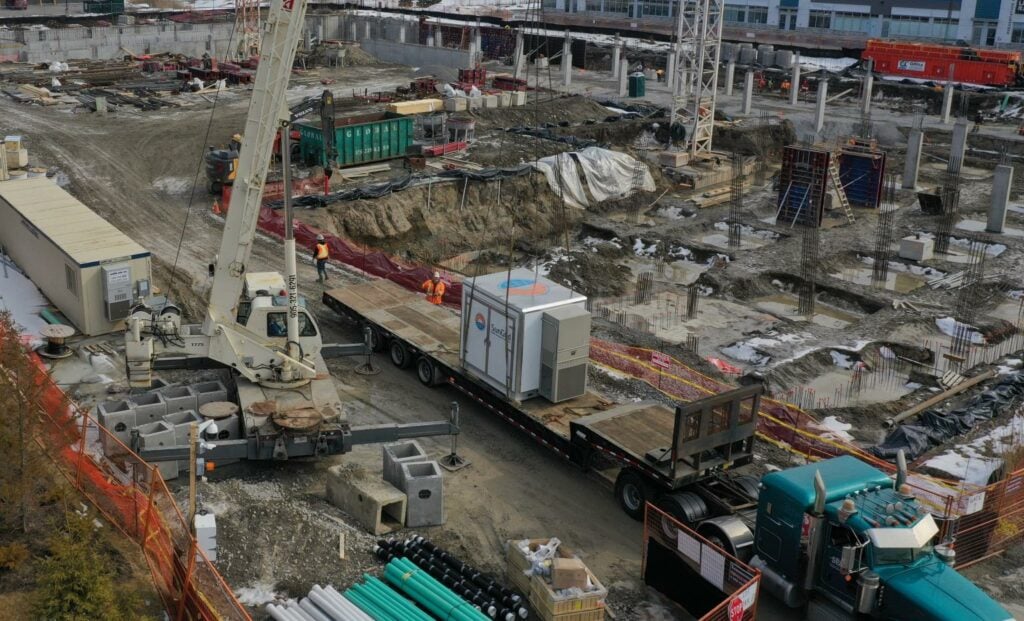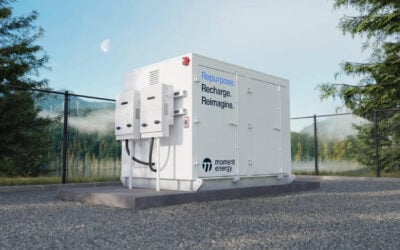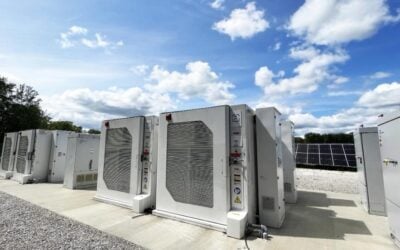
The government of Ontario, Canada, has ordered the procurement of at least 1,500MW and up to 2,500MW of energy storage.
The drive was announced on Friday (7 October), as the government looks to ensure electricity supply is sufficient and reliable as demand is forecast to increase significantly over the next few years as the province’s population grows.
Enjoy 12 months of exclusive analysis
- Regular insight and analysis of the industry’s biggest developments
- In-depth interviews with the industry’s leading figures
- Annual digital subscription to the PV Tech Power journal
- Discounts on Solar Media’s portfolio of events, in-person and virtual
In other words, while Ontario currently operates on a surplus of electricity resources and has been forecast to be able to do so until at least 2025, according to modelling by the Ontario Independent Electricity System Operator (IESO) after that date the margins become thinner.
A total 4,000MW of new electricity supply will be procured, and within that sits the energy storage target, alongside a planned 1,500MW of new natural gas generation. The IESO had recommended to the government that grid-scale battery storage should play a key role in the push for new resources.
Trade association Energy Storage Canada sent a statement to media including Energy-Storage.news applauding the Friday announcement made by Ontario Minister of Energy Todd Smith.
The announcement signaled that the provincial government, led by Premier Doug Ford, recognises “…the critical role energy storage resources must play in ensuring reliability, resiliency and helping to reduce Greenhouse Gas (GHG) emissions in Ontario’s electricity grid,” Energy Storage Canada executive director Justin Rangooni said.
Rangooni has blogged occasionally for this site on various topics around unlocking the potential of energy storage in the North American country, often with a focus on Ontario.
IESO’s forecast was made in its Annual Planning Outlook document published in 2021. Energy minister Smith had more recently tasked the system operator with providing recommendations on the eligibility of natural gas projects in its electric capacity procurements.
The system operator suggested that around 2,500MW of energy storage should be procured to provide flexibility to the energy system, with the storage assets charging during times of low demand or surplus renewable generation and then outputting to the grid at times of peak demand.
Most of that new supply should be online by 2027, the IESO said in the Resource Eligibility Interim Report it produced in response to Smith’s request.
It also recommended that other forms of low carbon energy should be procured, such as hybrid resources – power plants that combine renewable energy generation with storage – or biofuels and potentially other technologies.
The addition of the new gas capacity meanwhile would help mitigate against global supply chain delays and help balance out the system, the IESO said. It recommended that the majority of gas capacity additions should be made by upgrading or expanding existing facilities.
IESO VP of planning, conservation and resource adequacy Chuck Farmer said it was important for Ontario to be able to turn to a diverse set of resources to meet those predicted mid-decade energy shortfalls. That included being able to call on electricity imports and the addition of more energy efficiency programmes, Farmer said.
Electrification enabling growth of Ontario economy, minister says
Ontario currently has electricity generation capacity of about 38GW available to it from nuclear, hydroelectric, gas, wind, and solar PV, but annual electricity demand is forecast to grow at about 1.7% every year for the next 20 years.
The province has in fact been home to a fairly robust energy storage market for a while. However, this market is centred around the Global Adjustment Charge.
That’s a tariff or levy that large industrial users of electricity have to pay for power consumed at their facilities during peak times. As such, it has led to a lot of megawatt-scale behind-the-meter battery energy storage systems (BESS) that help those industrial entities lower their bills and grid power consumption, rather than front-of-the-meter energy resources of the type sought by the government.
The IESO is releasing another report later this year, ‘Pathways to Decarbonization’, which it said will include further recommendations on the role of natural gas in Ontario. The system operator manages Ontario’s electricity network in real-time, plans for future needs and aims to implement efficient market design.
“Our government is building the electricity generation and storage needed to support our success in driving electrification and attracting new jobs to the province including unprecedented investments, from electric vehicles and battery manufacturing to clean steelmaking,” energy minister Todd Smith said.
“Saying no to jobs and investment is a non-starter for our government. An unreliable system with brownouts and blackouts is a non-starter for our government. With today’s actions we are ensuring that the electricity will continue to be there for families and businesses when they flip the switch.”






